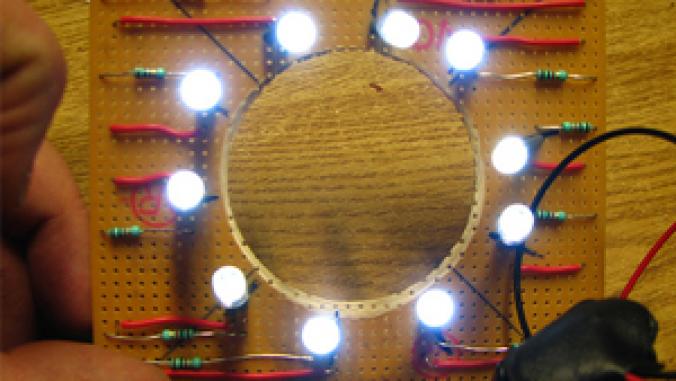Researchers Use Nanotubes to Create Solar Cells
New Jersey Institute of Technology researchers claim they've created a solar cell that is cheap and can be painted or printed on flexible plastic sheets. <br>
New Jersey Institute of Technology (NJIT) researchers claim they've created a solar cell from a polymer that is cheap and can be painted or printed on flexible plastic sheets.
"The process is simple," said Somenath Mitra, professor and acting chair of the school's department of chemistry and environmental services, in a statement. "Someday homeowners will even be able to print sheets of these solar cells with inexpensive home-based inkjet printers. Consumers can then slap the finished product on a wall, roof or billboard to create their own power stations."
Mitra led a team that settled on using carbon nanotubes as an electron conductor. Nanotubes, a molecular configuration of carbon in a cylindrical shape, are an estimated 50,000 times smaller that a human hair but have properties advantageous to Mitra's experiment.
"Actually, nanotubes are significantly better conductors than copper," Mitra said.
The researchers combined the carbon nanotubes with fullerenes to make snake-like structures. The fullerenes, or tiny carbon Buckyballs, can trap electrons but not conduct them. Sunlight, however, excites the polymers, making the fullerenes seize the electrons. The nanotubes can then conduct the electron flow.
The discovery could eventually avoid some of the current pitfalls associated with renewable energy generation at a time when renewable sources are receiving more attention for future energy needs. Traditional renewable energy generation, however, is cost prohibitive because of the large-scale infrastructure needed to tap wind or hydroelectric power.
Conventional solar cells can be fabricated from purified silicon but few consumers have the ability to process such a material.
"Developing organic solar cells from polymers, however, is a cheap and potentially simpler alternative," said Mitra. "We foresee a great deal of interest in our work because solar cells can be inexpensively printed or simply painted on exterior building walls and/or roof tops. Imagine some day driving in your hybrid car with a solar panel painted on the roof, which is producing electricity to drive the engine. The opportunities are endless."
Mitra authored and acted as the lead researcher of the solar cell development. It was featured in the June issue of Journal of Materials Chemistry, published by the Royal Society of Chemistry at Oxford University.
"The process is simple," said Somenath Mitra, professor and acting chair of the school's department of chemistry and environmental services, in a statement. "Someday homeowners will even be able to print sheets of these solar cells with inexpensive home-based inkjet printers. Consumers can then slap the finished product on a wall, roof or billboard to create their own power stations."
Mitra led a team that settled on using carbon nanotubes as an electron conductor. Nanotubes, a molecular configuration of carbon in a cylindrical shape, are an estimated 50,000 times smaller that a human hair but have properties advantageous to Mitra's experiment.
"Actually, nanotubes are significantly better conductors than copper," Mitra said.
The researchers combined the carbon nanotubes with fullerenes to make snake-like structures. The fullerenes, or tiny carbon Buckyballs, can trap electrons but not conduct them. Sunlight, however, excites the polymers, making the fullerenes seize the electrons. The nanotubes can then conduct the electron flow.
The discovery could eventually avoid some of the current pitfalls associated with renewable energy generation at a time when renewable sources are receiving more attention for future energy needs. Traditional renewable energy generation, however, is cost prohibitive because of the large-scale infrastructure needed to tap wind or hydroelectric power.
Conventional solar cells can be fabricated from purified silicon but few consumers have the ability to process such a material.
"Developing organic solar cells from polymers, however, is a cheap and potentially simpler alternative," said Mitra. "We foresee a great deal of interest in our work because solar cells can be inexpensively printed or simply painted on exterior building walls and/or roof tops. Imagine some day driving in your hybrid car with a solar panel painted on the roof, which is producing electricity to drive the engine. The opportunities are endless."
Mitra authored and acted as the lead researcher of the solar cell development. It was featured in the June issue of Journal of Materials Chemistry, published by the Royal Society of Chemistry at Oxford University.




